Gulf Coast Beautiful and Tasty
If you’ve read Living Large for any length of time, you know we’ve done a lot to adjust our lifestyle to help the environment and with food, our own health. We eat at home much more often than we did in the city and when I can get it, I’ve been buying organic meat, produce, eggs and milk for years now.
Some weeks before I left for a trip to Gulf Shores, Alabama last week, a story came out from Al Jazeera about deformities being found in some Gulf of Mexico seafood. Although unknown, the implication being that it is caused by the 2010 oil spill. Of course, the story was alarming.
I did some research into the issue and found a lot of information, none of it able to disprove the contention by scientists the government has hired that the seafood is safe. The contention is between some environmentalists and scientists saying the Gulf Coast, like Alaska after the Exxon Valdez spill, will need years of study to determine the full impact.
The FDA allows things into our food that we would find repulsive. Pink slime, for example, that ground up mixture of beef trimmings and ammonia in some ground meat products. The FDA also allows for a certain amount of insect parts in any processed food.
What they don’t allow are sick animals of any kind and especially not seafood.
Once one wades through the hype of the article by Al Jazeera, while raising questions about the full environmental impact of the spill, it doesn’t prove a thing but making the seafood unappetizing. What the article fails to mention is that any seafood found with illness today, just as it was prior to 2010, cannot enter our food system and even the article admits that the fish and shellfish found with problems make up a very small portion of the seafood caught.
It’s also true that the seafood coming from the Gulf is the most tested in the system.
I looked back at an article I did several years ago on how seafood is ultimately affected by anything anyone puts into the water, from pesticides in the Heartland that run down the Mississippi to the trash taken out to sea and dumped.
There are chemicals in all of our food, from factory farmed meats to the processed food we eat at restaurants. Our own bodies contain a huge amount of chemicals already that is naturally filtered. There’s no escaping it unless we do not eat anything.
So, here’s how I approached seafood on my trip: I ate lots of it.
I asked questions of every local I met about the quality of seafood and how the oil spill affected their business and if they had seen a decline in the quality of seafood since. None of them had and what is being served is of the same fine quality I ate while on a trip to the Gulf more than 25 years ago.
I met people whose lives and businesses were directly affected by the spill who love their region. People like Al and Diane Sawyer, owners of King Neptune’s Seafood Restaurant, who serve some of the best Royal Red (deep water) shrimp in the world. He told us that the most unexpected thing he had happen in his two decades as a restaurant owner was the oil spill, but he knew the region could recover, as it is. His loyal customers are back in droves, sometimes every night of the week.
I did spend some time on the Gulf Intercoastal waterway in Alabama. What I witnessed was not a decline of shrimp being harvested (the photo was taken after less than 18 timed minutes shrimping), or a harvest of small shrimp or deformed shrimp (I sifted through the shrimp and although not an expert, I didn’t see any without eyes as the article described), but our boat captain was taking the keepers home for his family to consume. We witnessed the same with blue crab, and oysters seemed to be aplenty every place we ate.
Ocean life isn’t all that seem to be thriving along the coast. The osprey, a raptor that was once on the brink of extinction, could be seen at the top of many a tree along the waters, sitting on eggs.
On Saturday, we were treated to seeing not one, but two pods of dolphins, one a maternity pod with a newborn calf. Captain Bill with Cetacean Dolphin Cruises, who has named and recognizes over half of the dolphins (distinguished by it’s dorsal fin) says he has not seen a reduction in the quality of health. He even works with NOAA (National Oceanic and Atmospheric Administration) as they monitor dolphins along the Gulf Coast.
There’s no doubt life both onshore and off was impacted by the 2010 spill. There’s no doubt that it will take years of testing to determine the full environmental impact.
There’s also no doubt these people deserve to get their lives back to normal and that their white sand beaches are some of the most beautiful in the world.
And I’m sure enough about the seafood that I will continue eating it, and in the words of Forrest Gump, that’s all I have to say about that.
A huge portion of the U.S. harvested seafood comes from the Gulf of Mexico. Some studies suggest that 30 percent of consumers discontinued purchasing seafood from the Gulf after 2010. Do you eat seafood? Did the spill make you think twice? Have you resumed eating it?
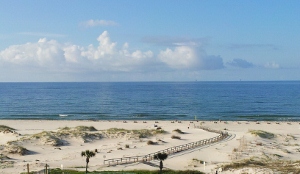
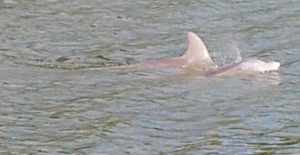
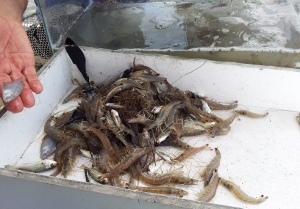
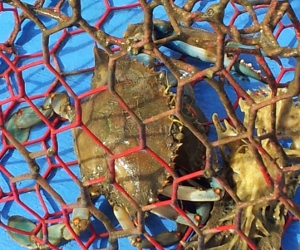
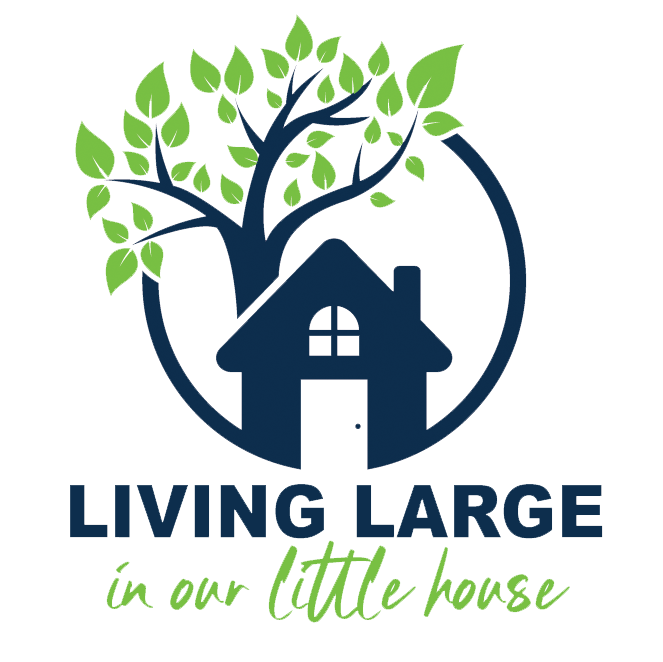







Truth is, I never stopped eating it. Thanks for giving me more peace of mind, though.
I never stopped eating it either.
Such an important topic.
It is a very important topic, considering a whole region’s life depends on it.
I love seafood and I’ve been wanting to take my family to that part of the country. I’m glad to know that we can go ahead and enjoy all the seafood restaurants. I can’t imagine visiting the area and not getting my fill of fresh seafood. Thanks for this post!
Hope you get to visit soon, Kristen. It is beautiful there and the seafood is yummy!
I’m so glad I read this. I feel much safer eating Gulf seafood now…good to hear first-hand experiences!
You’re welcome, Sheryl!
I appreciate your first-hand report from the Gulf Coast locals on the safety of seafood from that area. It’s such a lovely spot in our country. The residents have suffered greatly, both from the oil spill and from the misinformation and over dramatization produced by the media. I don’t have any trips planned to the Gulf Coast this year, but if I did, I’d eat the seafood, especially after reading your post.
Thanks, Donna. If you’re anywhere near the southern or middle part of the country, you’re more than likely getting your seafood from the Gulf anyway. The way we can help is just to keep buying it.
Glad to hear from the locals – I trust them much more than the FDA or other official mouthpieces some days! I’ve always spent my food dollars on Gulf Coast seafood instead of anything farmed from Thailand, so it’s great to hear first-hand about the region’s recovery.
Yep, I trust anything coming from the Gulf more than stuff farmed from Thailand or China.
I visited Cedar Key, Florida (it’s not part of the Keys) right after the spill. It’s on the Gulf and so many people told me, before I left, not to eat any fish. But we found that it was totally unaffected by the spill and the fish and shellfish were amazingly fresh and clean. (We spoke to fisheries people who confirmed the health of the fish, oysters and clams in their waters.)
I think there is a lot of unrational fear out there. I’m glad you enjoyed your trip – and the food!
Thankfully I hate most seafish! Well, to eat anyway. Those dolphins are adorable.
Oh, I cannot imagine hating seafood. And yes, those dolphins are adorable.
Being from the left coast, most of our seafood comes from the Pacific, but it’s a relief to know that what does come from the Gulf Coast is safe and just as tasty as ever.
It is, Heather. I have to wonder if there were similar concerns from the pollution that went into the ocean following the earthquake and tsunami in Japan last year?
We just returned from a trip to Destin. The beaches are beautiful there. There was no sign of any oil spillage. There were a lot of red jellyfish one day but other than that it was great. Yes I did eat shrimp and had no qualms about it.
Maybe I am an optimist, but the more signs of life we see on the beaches, such as the jellyfish, the more I believe that nature is helping to heal itself. Glad you had such a good time on your Gulf Coast trip, Linda!
It’s hard to know what to believe from The Feds, the Environuts, and the Industry, because you know that they’re going to spin it in their favor. Facts are somehow no longer facts and it’s tough to get a grip on The Gulf seafood situation. I think the absolute best way to get perspective is to do exactly what you’ve done, Kerri–talk to the locals. Talk to the restauranteurs who wouldn’t survive if they poisoned their customers. Talk to the fishermen in that same boat. I think it’s so rare these days that you get that kind of first-hand human feedback…it’s all numbers, manipulation, and scare tactics.
So in other words…thanks, Kerri!
It is a job these days sorting facts, Mat. I’m glad you found my perspective helpful.
Our seafood comes primarily from either the Gulf of St. Lawrence,the Northumberland Strait, or off the coast of Nova Scotia so I can’t address your question specifically. As children we used to eat mussels and clams from “contaminated” beaches (what did we know?) and that was many decades ago . . . most of our local mussels are now “farmed” – i.e. suspended in “socks” from lines so they aren’t bottom feeding. We rely on DFO to close areas of concern but I’m sure many Islanders ignore the warnings and fish as they always have. Oh, I don’t know . . . mostly we survive, somehow 🙂
I haven’t been down to the Gulf Coast since DH and I, very young hippies at the time, drove down to Mexico in a VW van – standard transportation for hippies at the time!
Oh, jealous, Olivia, I’ve always wanted a VW van and to drive to Mexico! 🙂 I wondered if people in other areas have some of the same concerns regarding seafood.
Thanks for sharing! We are spending a week in Gulf Shores in late June. I’ve never been to this part of the gulf and did wonder about food safety. Because when in Rome …. and 3 of our 5 grandchildren are going on this trip and I want them to try new things.
You will have a fabulous time, Carol. I had never been to Alabama at all, my first trip to the Gulf was to Galveston Island on a (rather wild) college trip a lifetime ago. 🙂 Where are you staying? If you have time, you should really click on the link above and take that dolphin tour! It is spectacular and your grandkids will love it. If you can, you should book now as he sells out months in advance. He is one of the only dolphin tour companies in the Gulf that is certified by NOAA for his sustainable tour practices (not running the dolphins down and being respectful of thier lives and habitat). What you get is a much better chance of seeing them as the dolphins know him and his boat and respect and trust him. You should also make time to go to the Alabama Gulf Coast Zoo, we got to feed baby white bengal tigers. Another great experience to teach kids about nature and respect for animals.
As for restaurants, definitely King Neptunes and The Hangout, which is a very fun, family friendly atmosphere with games and all kinds of stuff for the kids to do.
This post was very reassuring, and I love that you quote Forrest Gump.
🙂